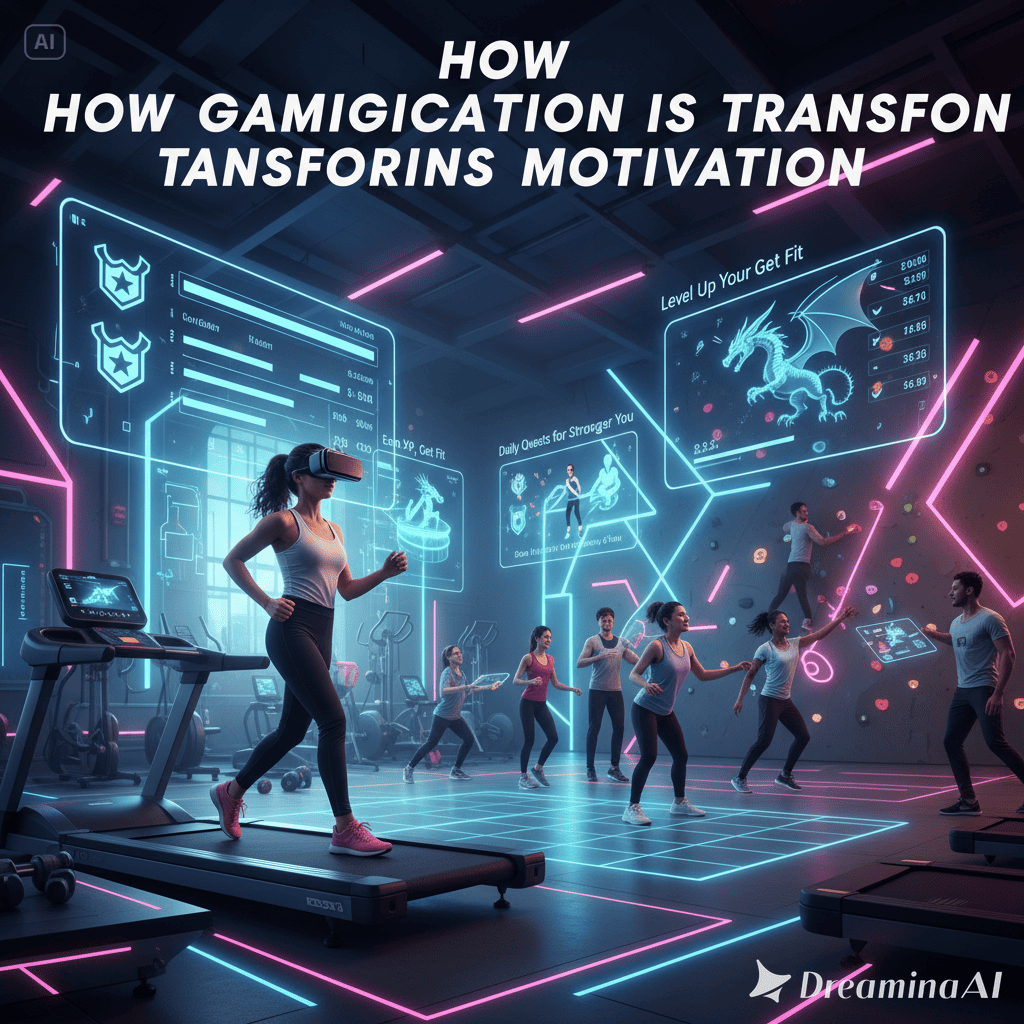Discover how gamification is transforming fitness motivation in 2025 with rewards, challenges, and immersive experiences.
Staying fit has always been a challenge for many people, especially when motivation starts to fade. In 2025, gamification—the use of game-like elements in non-gaming contexts—is revolutionizing how individuals stay active. By turning workouts into rewarding, fun, and interactive experiences, gamification is making fitness more engaging and sustainable.
1. What Is Gamification in Fitness?
Gamification applies mechanics from video games—such as points, levels, leaderboards, and challenges—into fitness apps, devices, and programs. Examples include:
- Earning points for completing workouts.
- Unlocking achievements after hitting milestones.
- Joining leaderboards to compete with friends or global users.
- Completing quests or missions that encourage regular training.
2. Why Gamification Works for Fitness Motivation
a. Increases Engagement
Workouts feel like fun missions instead of chores.
b. Creates Accountability
Leaderboards and community challenges push users to stay consistent.
c. Provides Instant Rewards
Badges, virtual trophies, or discounts keep users excited to continue.
d. Builds Long-Term Habits
Small, consistent wins encourage users to form lasting routines.
3. Popular Examples of Gamified Fitness in 2025
- Fitbit Adventures & Quests → users complete daily steps to unlock virtual trails.
- Zombies, Run! → fitness app that turns jogging into a survival game.
- Apple Fitness+ Challenges → monthly competitions with badges and exclusive rewards.
- VR Fitness Games → titles like Beat Saber and Supernatural that make workouts immersive.
- Corporate Wellness Programs → gamified platforms that reward employees for active lifestyles.
4. Benefits Beyond Motivation
- Community Building → users feel part of a fitness tribe.
- Personalization → AI tailors challenges to individual fitness levels.
- Mental Health Support → gamified workouts reduce stress and boost dopamine levels.
- Integration with Wearables → seamless syncing of heart rate, calories, and achievements.
5. Challenges and Risks
- Overreliance on Rewards → some users may stop exercising once rewards are gone.
- Data Privacy Concerns → fitness apps collect sensitive health data.
- Unrealistic Competition → excessive competitiveness can discourage beginners.
- Accessibility Issues → not all users have access to premium devices or VR fitness platforms.
6. The Future of Gamified Fitness
- Metaverse Fitness → virtual gyms where users can exercise together in immersive worlds.
- AI Coaches → personalized feedback and gamified training routines.
- AR Fitness Adventures → workouts blended with real-world exploration.
- Integration with Health Insurance → rewards for active users through gamified systems.
Conclusion
Gamification is reshaping fitness motivation by turning exercise into a rewarding and enjoyable experience. From wearable challenges to VR fitness, this trend is making health goals more achievable and fun.
As technology advances, gamification will continue to create not just fitter individuals, but also more connected, healthier communities.
Recommend :













